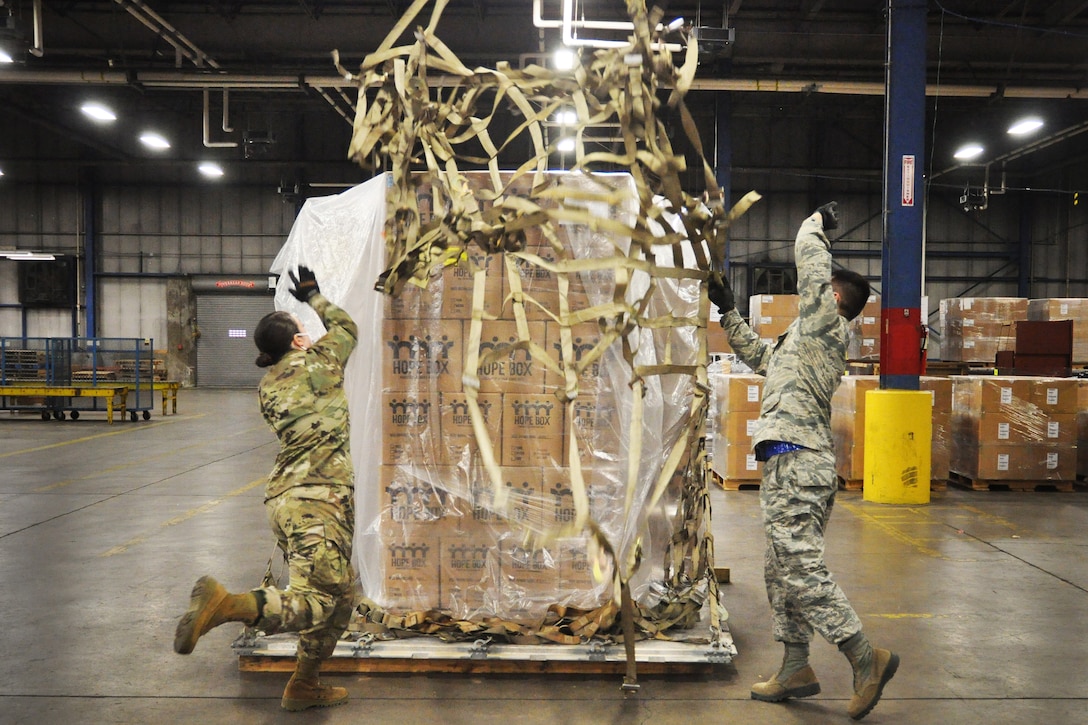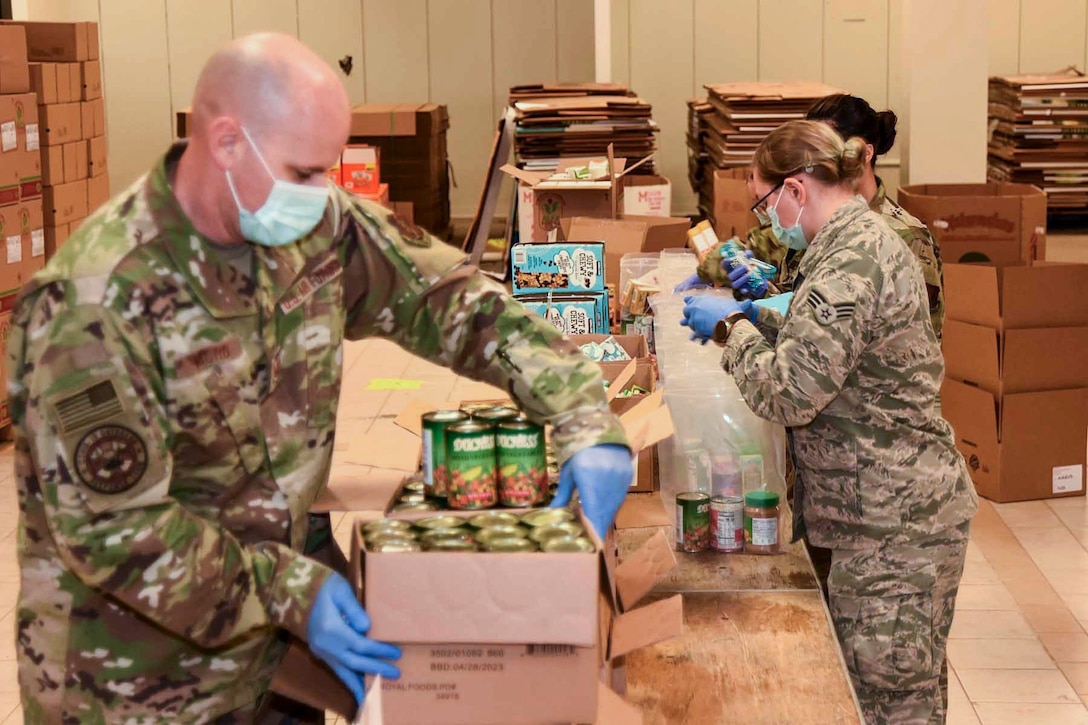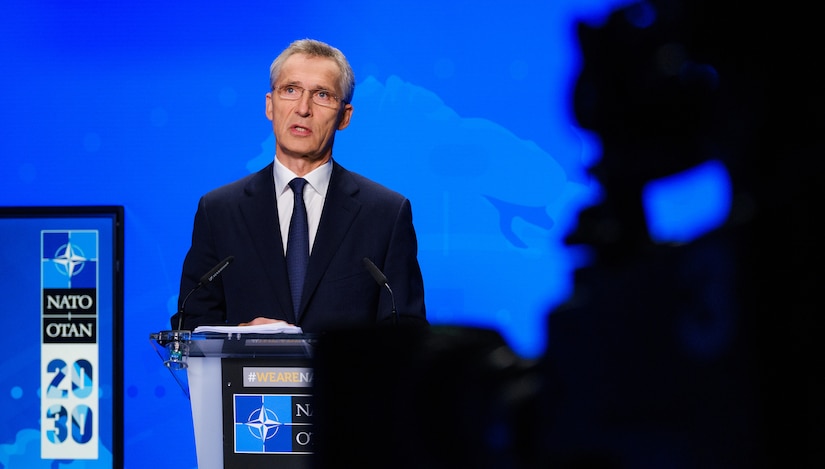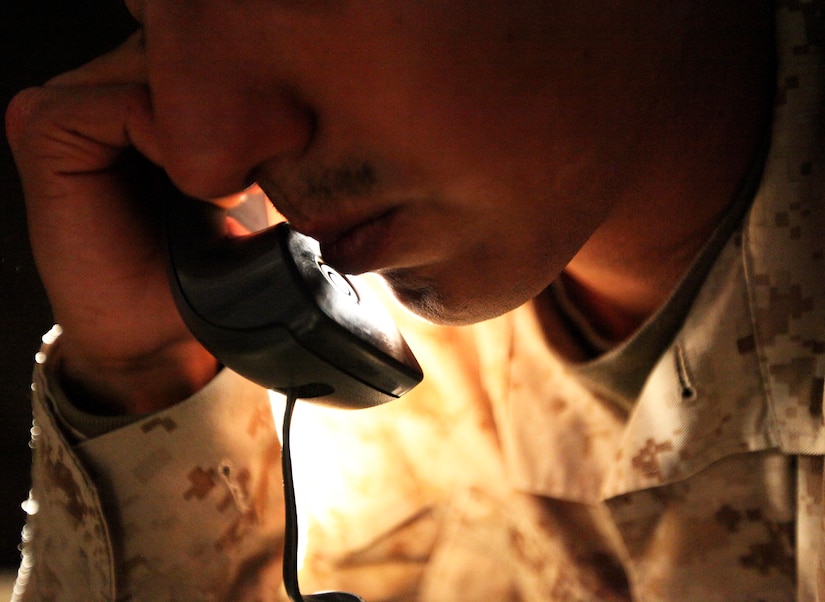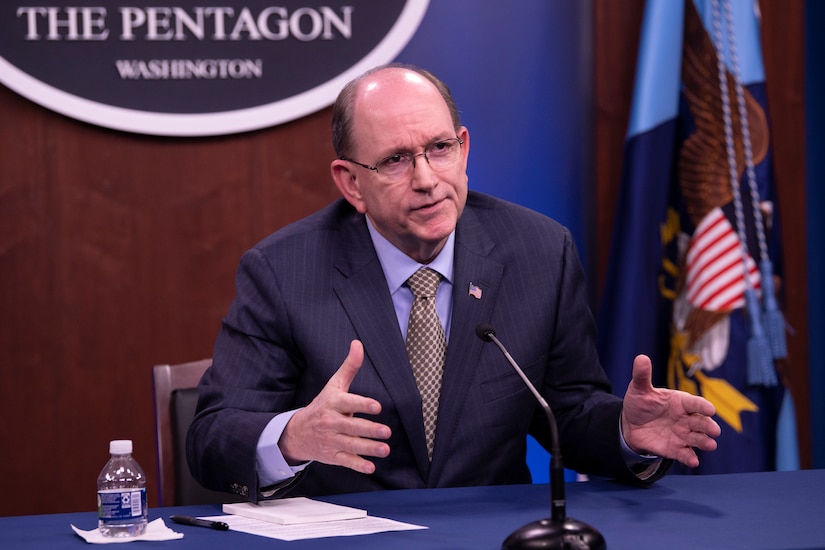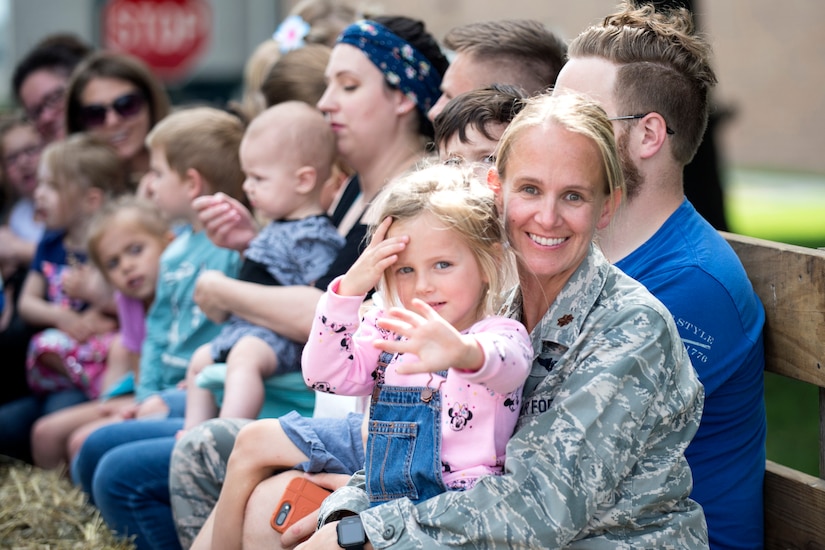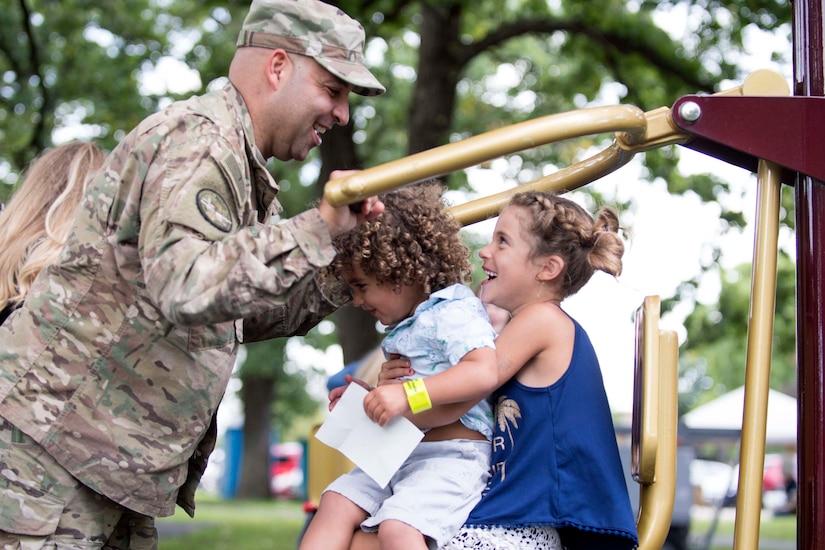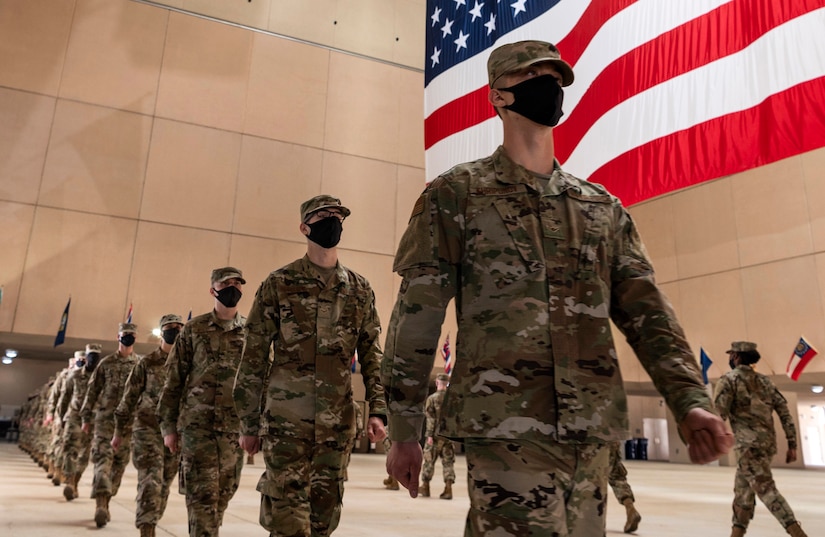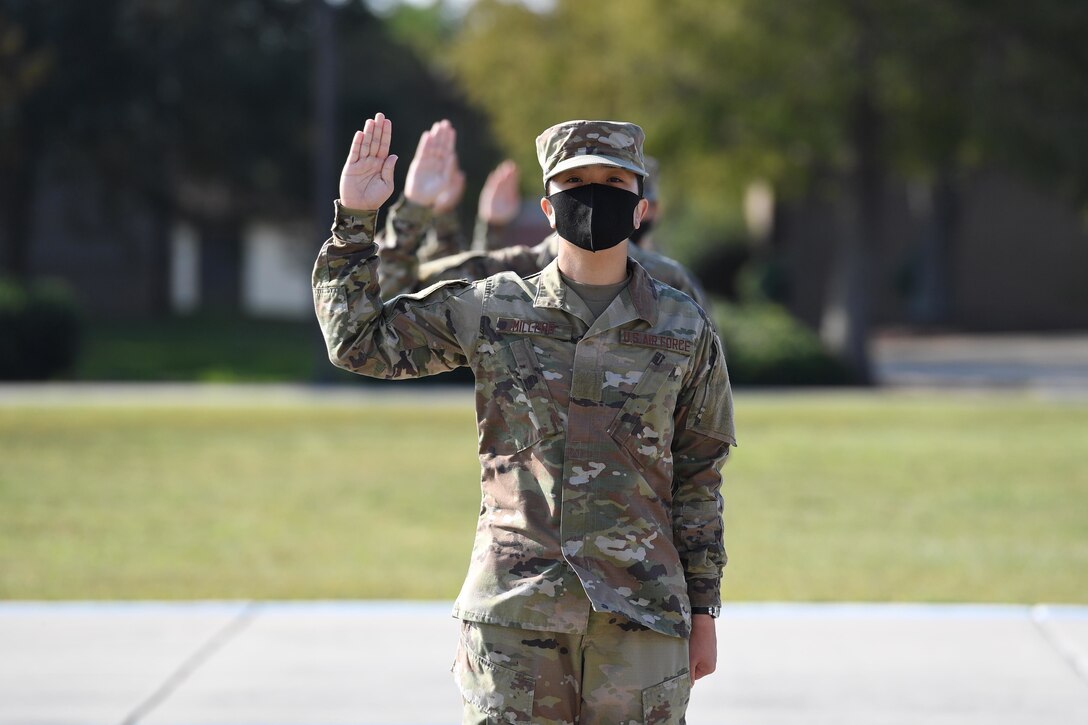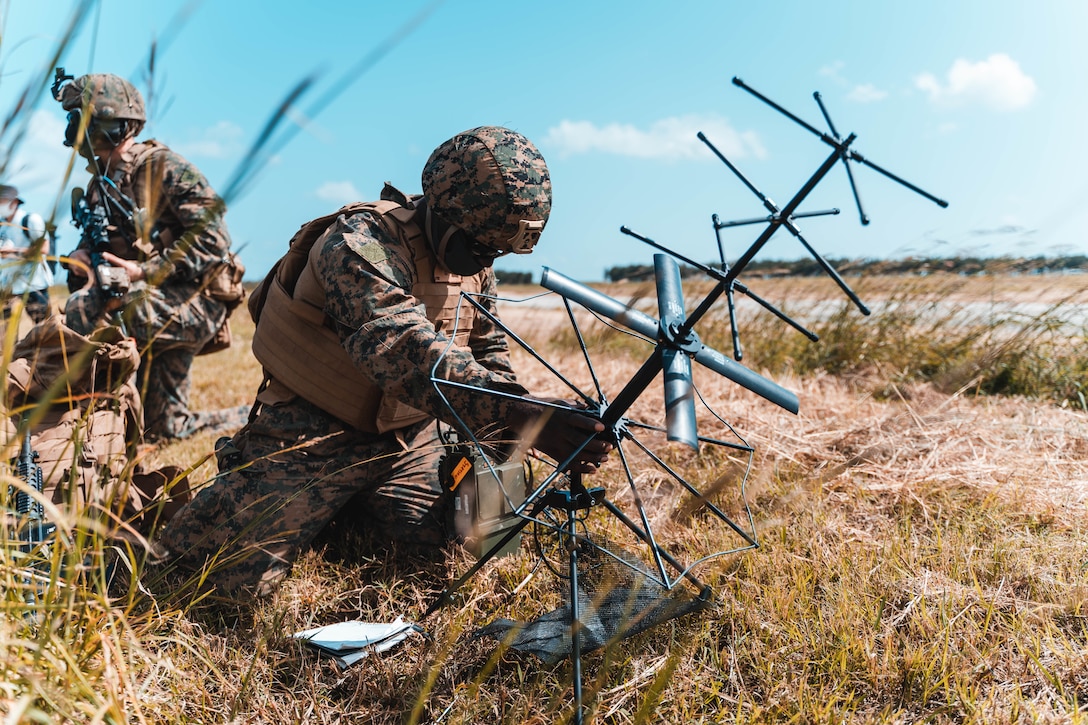Oct. 21, 2020
|
BY Jim Garamone
, DOD News
NATO defense ministers are meeting virtually to chart
the course of the alliance. Defense Secretary Dr. Mark T. Esper will
attend the meeting from his office in the Pentagon.
Alliance Secretary General Jens Stoltenberg briefed the news media
from around the world on the agenda for the defense ministers saying he
expects them to discuss strengthening deterrence, fairer burden-sharing
and the NATO missions in Afghanistan and Iraq.
Stoltenberg released alliance defense spending estimates for 2020,
and they show clear progress toward the alliance goal of each country
spending 2 percent of their gross domestic product on defense. The
estimates "show that this year will be the sixth consecutive year of
increased defense spending by European allies and Canada with a real
increase of 4.3 percent," he said. "We expect this trend to continue."
NATO figures show that 10 countries have reached the 2 percent goal.
The United States leads all nations with 3.87 percent spent on defense
followed by Greece, the United Kingdom, Romania, Estonia, Latvia,
Poland, Lithuania, France and Norway.
What the allies are investing in is also as important as the amount
of money. "Allies are also investing more in major capabilities and
continue to contribute to our missions and operations," Stoltenberg
said. "We will also address NATO’s strengthened deterrence and defense
posture, including our response to the Russian missile challenge, which
is growing in scale and complexity."
The allies are also paying attention to the nuclear deterrent to
ensure it remains safe, secure and effective, even as they remain
committed to arms control and disarmament. "We have a long track record
on nuclear disarmament," the secretary general said. "We have reduced
the number of NATO nuclear weapons in Europe by more than 90 percent
over the last 30 years.
Stoltenberg addressed the future of the New Strategic Arms Reduction
Treaty, which expires early next year. "The allies support the
extension of New START by the United States and Russia,
and I welcome progress on this issue in recent days because we should
not find ourselves in a situation where we have no treaty governing the
number of nuclear weapons," he said.
The alliance continues to adapt in all domains, including space. He
said space is becoming a "crowded and competitive" domain. "Some nations
– including Russia and China – are developing systems which could
blind, disable or shoot down satellites," he said. "Space is essential
for our ability to navigate, communicate and detect missile launches and
fast, effective and secure satellite communications are vital for our
troops."
He expects the defense ministers to agree to establish a new NATO
Space Center at Allied Air Command in Ramstein, Germany. "This will be a
focal point to support NATO missions with communications and satellite
imagery; share information about potential threats to satellites; and
coordinate our activities in this crucial domain," he said.
He stressed the alliance does not want to militarize space, but rather to increase NATO’s "awareness of challenges in space and our ability to deal with them."
The ministers will spend time discussing the NATO missions in
Afghanistan and Iraq. In Afghanistan, NATO has around 12,000 troops. The
alliance members have adjusted the numbers in light of the peace
process, but, he stressed, any further adjustments in the numbers remain
conditions-based.
"The Taliban must live up to their commitments, to significantly
reduce the levels of violence and pave the way for a ceasefire," he
said. "They must break all ties with Al-Qaida and other international
terrorist groups, and they must negotiate in good faith."
The inter-Afghan talks in Doha, Qatar, offer the best chance for
peace in a generation, he said. "They must preserve the gains made at
such high price over the last two decades, including for women and
girls."
In Iraq, the security situation remains challenging, and NATO stands
with Iraq in the fight against international terrorism, the secretary
general said. "So, we will decide to step-up our training mission and
enhance our support, in full coordination with the Iraqi government and
the global coalition to defeat ISIS," he said.
The meeting ends Friday.

